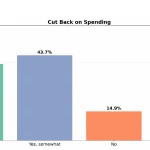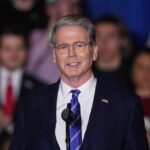
New information published in a “Twitter Files” release breaks down the internal deliberations regarding the 2021 suspension of then-President Donald Trump.
Internal platform communications obtained and published by author Michael Shellenberger on Saturday reveal that Twitter executives had a specific plan in place to remove Trump’s presence in the wake of the Jan. 6, 2021, Capitol incursion.
Yoel Roth, head of Twitter’s “trust and safety” team, bragged about the plan in internal chats.
Around 11:30 am PT, Roth DMs his colleagues with news that he is excited to share.
“GUESS WHAT,” he writes. “Jack just approved repeat offender for civic integrity.”
The new approach would create a system where five violations (“strikes”) would result in permanent suspension. pic.twitter.com/F1KYqd1Xea
— Michael Shellenberger (@ShellenbergerMD) December 11, 2022
Trending:
Twitter censors quickly moved to apply the new restriction to Trump, who was permanently suspended from Twitter on Jan. 8, 2021.
The colleague wants to know if the decision means Trump can finally be banned. The person asks, “does the incitement to violence aspect change that calculus?”
Roth says it doesn’t. “Trump continues to just have his one strike” (remaining). pic.twitter.com/Qyi1sJNa0w
— Michael Shellenberger (@ShellenbergerMD) December 11, 2022
Trump’s account had been previously hit with a temporary 12-hour suspension in the wake of the disturbance.
Has Twitter been honest about its actions?
Yes: 14% (1 Votes)
No: 86% (6 Votes)
When it announced Trump’s permanent suspension, Twitter cited what it claimed was “risk of further incitement of violence.”
Roth succeeded in securing a defined criterion for Trump’s permanent suspension around the same time — a policy decision made by then-Twitter CEO Jack Dorsey himself.
Under the new criterion, Trump would be permanently suspended for any violation of Twitter’s speech code.
Around noon, a confused senior executive in advertising sales sends a DM to Roth.
Sales exec: “jack says: ‘we will permanently suspend [Trump] if our policies are violated after a 12 hour account lock’… what policies is jack talking about?”
Roth: “*ANY* policy violation” pic.twitter.com/ExSFNM7BAb
— Michael Shellenberger (@ShellenbergerMD) December 11, 2022
In the case of Trump’s suspension, Roth discarded a longstanding Twitter policy in which content that violated site rules would be allowed in the event it was of significant public interest.
What happens next is essential to understanding how Twitter justified banning Trump.
Sales exec: “are we dropping the public interest [policy] now…”
Roth, six hours later: “In this specific case, we’re changing our public interest approach for his account…” pic.twitter.com/XRUFil2npI
— Michael Shellenberger (@ShellenbergerMD) December 11, 2022
Some of the novel speech restrictions applied to Trump’s Twitter account were even applicable to users who shared images of censored tweets — a policy the platform’s employees struggled with implementing.
What if a user dislikes Trump *and* objects to Twitter’s censorship? The tweet still gets deleted. But since the *intention* is not to deny the election result, no punishing strike is applied.
“if there are instances where the intent is unclear please feel free to raise” pic.twitter.com/8bdG6b38ej
— Michael Shellenberger (@ShellenbergerMD) December 11, 2022
Roth left Twitter in November, in a rejection of Elon Musk’s plans to increase speech protections on the platform.
Musk has subsequently identified Roth as Twitter’s “real” CEO, executing vast authority at the platform on decisions of great consequence.







